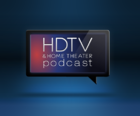 Jun 20
Jun 20 Podcast #640: ATSC 2.0: Over the Air gets Better... But is it too late?
 Before there was HDTV there was NTSC (National Television System Committee) or, as it was known by most people today, standard definition. That was the standard developed in 1941 and was in effect until it was superseded by ATSC (Advanced Television Systems Committee) which brought us high definition television - which in turn gave rise to this podcast!
Before there was HDTV there was NTSC (National Television System Committee) or, as it was known by most people today, standard definition. That was the standard developed in 1941 and was in effect until it was superseded by ATSC (Advanced Television Systems Committee) which brought us high definition television - which in turn gave rise to this podcast!
| Download this Episode. |
Listen to the show
Today's Show:
News:
- Roku chief predicts an all-streaming TV future
- Tablet users prefer OTT apps to broadcast, cable apps
- YouTube to offer subscription music-streaming service
Other:
- TV Setup Guide: 14 tips for getting the best picture quality out of your TV
- 20 TVs tested: Which sets can pass surround sound to a sound bar?
Amazon Prime:
Sign up for Amazon Prime and enjoy:
- Free Two Day Shipping!
- Instant Streaming of TV Shows and Movies
- Instant Access to thousands of Kindle Books
- The HT Guys gratitude!
ATSC 2.0: Over the Air gets Better... But is it too late?
Before there was HDTV there was NTSC (National Television System Committee) or, as it was known by most people today, standard definition. That was the standard developed in 1941 and was in effect until it was superseded by ATSC (Advanced Television Systems Committee) which brought us high definition television - which in turn gave rise to this podcast!
ATSC was a dramatic step forward in picture quality and capability. But being first meant there were limitations. For instance ATSC is mpeg 2 which does not compress as nicely as mpeg 4 which is used in Europe and other parts of the world. At the time ATSC was developed, 1990s, 1080p and 4K were not really on the radar. At least we had accurate color and clear pictures!
Technology moves on and broadcast standards have a hard time keeping up. With ATSC 2.0, at least the ATSC is trying. The latest version of their broadcasting standard has a lot of improvements that we’ll discuss. The main question, however, is it already too late?
What’s in ATSC 2.0?
The main features of the standard are:
- Non Real Time (NRT) Services - This can be ads targeted to viewers based on time of day, what the viewer is watching, or specific data about the viewer. The broadcaster can also provide a VOD service that is delivered over the air. Watch your network content when you want without a DVR. The broadcaster can even deliver content in advance and have it ready for viewing at a specific time.
- Two Way Communication - Now when viewers watch a voting based show they will be able to vote without the use of a telephone. They’ll be able to get more information about advertised products. This will tie into the NRT services and have that content delivered for viewing on demand. Better and more accurate viewership numbers can be obtained which may save some shows that may otherwise get canceled.
- Watch Multiple Channels Simultaneously - You will be able to set up your screen with multiple views that include widgets or other channels. You can have weather forecasts, Twitter, or Facebook along with news and sports. Essentially turning your plain old over the air system into an advanced set top box without the need for the Internet. If you have Internet the capabilities are further enhanced!
- Mobile Broadcast - Current ATSC does not work when the receiver is moving. That will change in 2.0. Mobile devices are becoming the norm and we can see the day when you cars will come from the factory with antennas that can receive ATSC signals making it possible for your children to watch their favorite cartoons on the go.
These are just a few of the features available in the ATSC 2.0 spec. If you want more information it is available at ATSC.org.
When do I get all this cool stuff?
You know it took broadcasters a few years to roll out HDTV to everyone. We don’t even think about those dark days any longer. The specification will be approved later this year and then its anyone guess when broadcasters will implement them. It will be at least a few years so don’t count on anything before 2016 or 2017 at the earliest. And even then, it won’t be ubiquitous.
Does it even matter?
Much of what is proposed in the new standard is already available today through cable or satellite augmented with the Internet. Mobile over the air broadcast sounds like it would be pretty cool but with faster data networks and more broadcasters going online with content its not really a game changer. Higher resolution, 4K, content is not even slated until ATSC 3. By then, Netflix will be streaming 4K on much of its offerings. Fast internet is the key and rural areas not serviced well by Internet providers will lag. Its also likely that the rural areas will be slower to adopt the next ATSC standard as well. We believe that most of the country will be serviced by reliable high speed Internet before broadcasters embrace ATSC 2.0 and 3.0. And at that point will broadcasters even have incentive to roll out new more costly services? Let us know what you think.


Reader Comments (3)
No mention of MPeg 4 as a part of ATSC2??
Hi Paul,
Mpg4 has been in the spec since July 2008. It kind of proves the point that broadcasters will be slow to change. There are just too many devices that only support mpg2. It will take a major switch like moving to ATSC 2.0 to get us mpg4.
Ara
Thanx Ara,
If they start to build it into TVs now then say in 4 years time it could be rolled out for OTA assuming that as you say "It's maybe too late" :-)